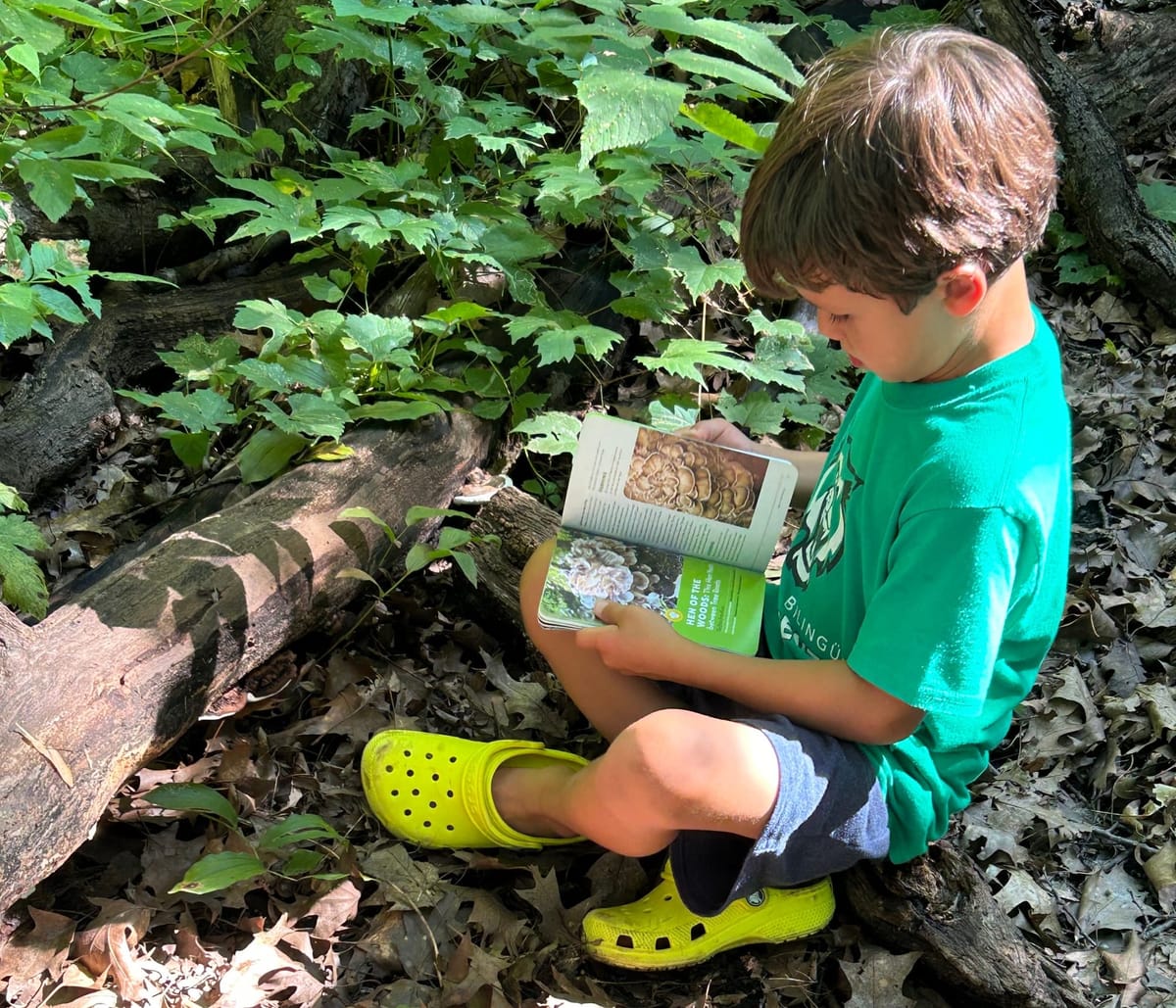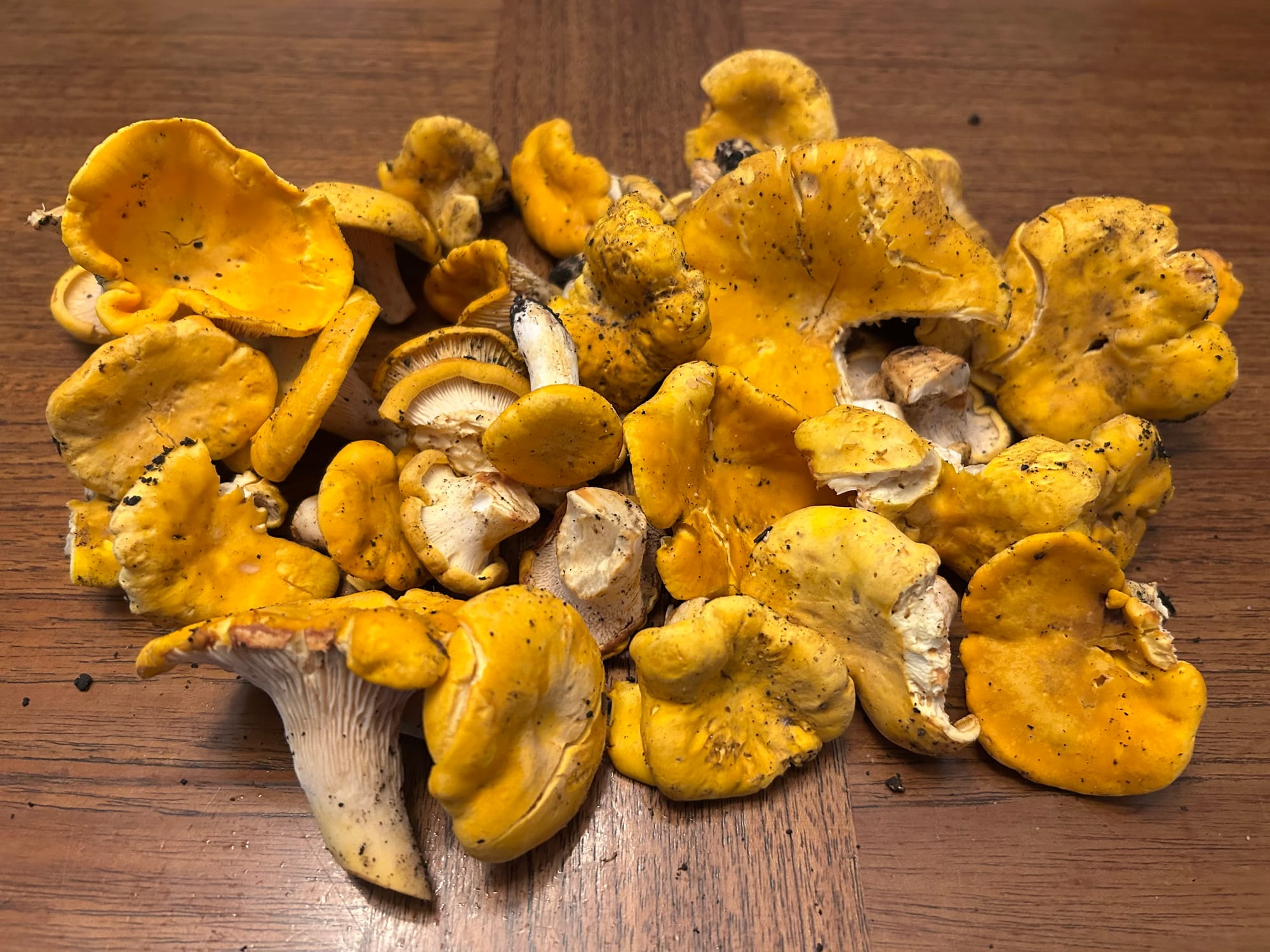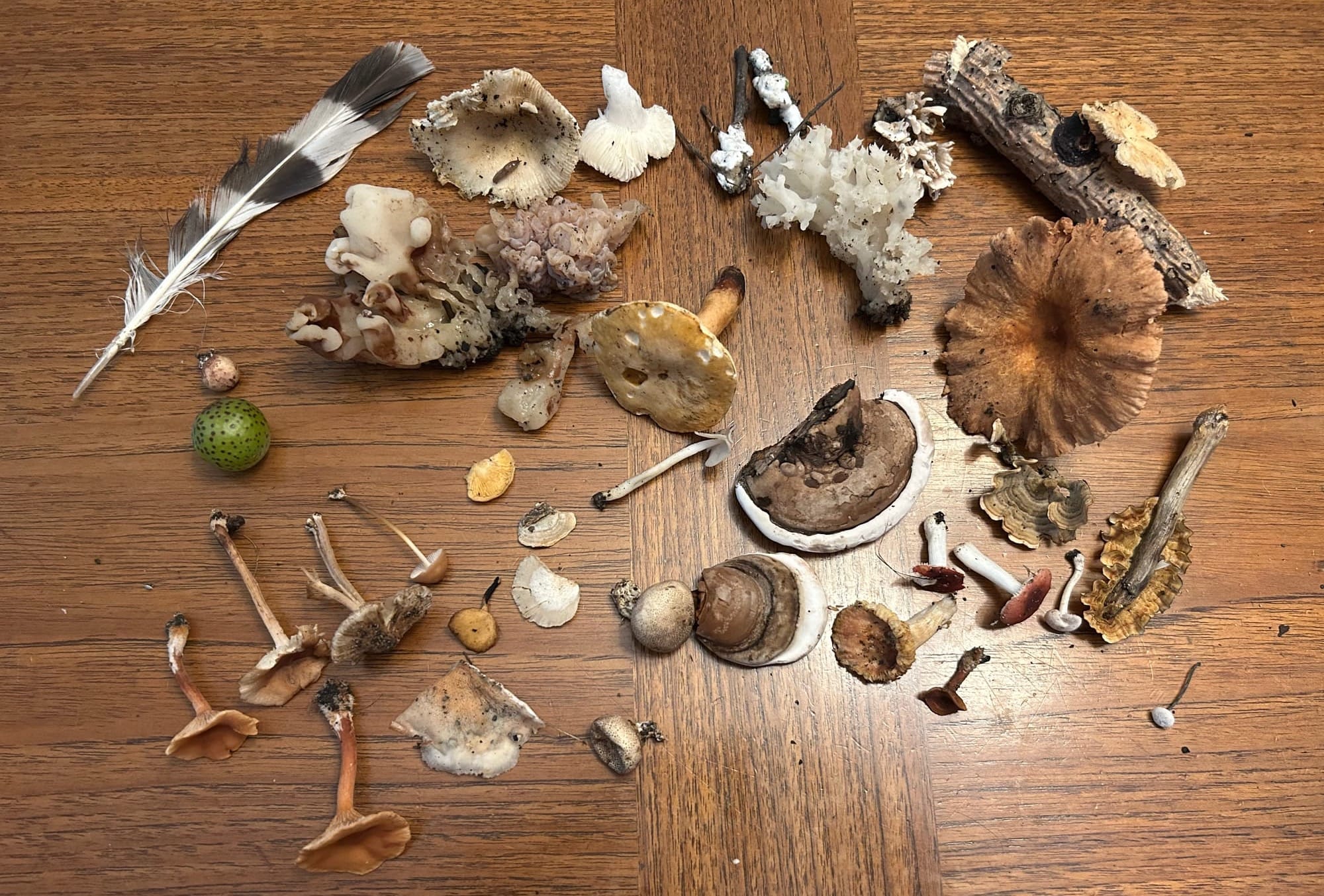Foraging: For the joy of it

I first learned about mushroom foraging from the Latvian immigrant grandmas and aunts of a high-school friend. More than the taste, I remember the astounding color and variety piled into their fall harvesting baskets. Since then, I have gained a limited repertoire of safe mushrooms, and I’ve enjoyed treating folks to the harvest—especially chanterelles, which grow abundantly in Minnesota in wet years: This year I gathered 5 pounds from my favorite spot (and no, I won’t tell you where it is!).
I wouldn’t bring the grandkids to my favorite spot. It’s back in the woods and full of mosquitoes: Hordes, swarms, and travesties of mosquitoes. Plus, kids aren’t necessarily impressed by foraging for mushrooms, because often they don’t like mushrooms. Blueberries or saskatoons are more their thing.
But the mushroom-foraging bug can bite in other ways, too. One grandson did get interested in mushrooms because he saw our dog take a bite of one, after which the poor pup threw up. (The illness was probably due to the mass quantity of grass he ate rather than the mushroom, but the mushroom in question, Russula emetica, does have a suggestive name.) In any case, Grandson’s parents fed his interest by taking out a foraging book from the library, and now Grandson is excitedly telling me details, like how to make tea from turkey-tail fungus, and which look-alikes we need to be wary of when gathering chanterelles. Very importantly, he has learned key foraging safety rules, like don’t eat little brown mushrooms, because there is at least one type of little brown mushroom that can kill you. (Don’t worry, Grandson won’t be foraging on his own for years yet.

Like people, like birds
The need for caution is an aspect of one beauty of foraging, which is the need to attend closely to what you are seeing, smelling, or walking through. The close attention leads you to what you’re seeking—you’ll walk right past excellent edibles if you’re not watching for them. And the attentiveness leads to other gifts, too. The other day, I was checking out a mushroom patch that turned out to be prolific, but nonedible. On the way back down the path, a tiny bird—probably a juvenile mourning warbler—landed three feet from me. I stopped, stayed motionless, and was treated to the bird gradually hopping closer to me as it foraged among the blueberry bushes, finding a red worm (apparently hard to get down) and a green worm (one gulp), until it was 18 inches from my boot. The bird occasionally glanced at me, showing vigilance but not fear. Eventually, it fluttered down the path the direction I was headed, and, after I followed, I got another chance to watch the little bird close up, this time squatting low.
Another beauty of foraging is that it connects you to the rhythms of nature in your area. Where I live, we find morels and oyster mushrooms in the spring; chanterelles, Suillus pictus, and Lactarius deliciosus in the summer; an explosion of varieties in the fall; and chaga in the winter. Within those generalities, though, you need much more detail to learn where and when exactly the fungi grow: What landscape? What type tree, if any? Bright sun or abundant shade or moisture? Looking for the detail teaches you a lot about where you live, in addition to showing you who or what lives alongside you.
We share benefits like this with other animals. Indeed, according to behavioral scientist Thomas Hill and colleagues, “Among metazoans, the capacity to forage—that is, to adaptively search for and exploit resources—is ubiquitous.”But there are various foraging strategies. Mushroom foraging often employs an “area-restricted search” strategy. Unlike random searches, area-restricted searches draw on prior knowledge. I don’t search an entire forest—I go where nature’s rhythms have directed me before, and then begin my search. But unlike an obsessive coverage of an area—say, sweeping back and forth as if I were mowing a lawn, not deviating—I wander a bit, keeping my eyes open. And, if I’m unsuccessful in my chosen spot—maybe it’s too late in the year, or the mycelia ran out of food or water—I move somewhere entirely different to try again. And I stay open to finding some different mushroom, or other treasure, like the little warbler, which was doing the same thing—carefully searching a small area, peeking under leaves and along branches to find those worms, then trying the next spot. In Hill et al.’s words, the bird and I are employing a “trade-off between two opposing behavioral motivators—exploiting known resources and exploring for unknown resources.”
Hill and colleagues further suggest that humans use area-restricted search strategies to organize our environments: We put most of the food we need in the grocery store, most of the information and pleasure reading in libraries and book stores, and amass information in the web under search terms. In all these cases, however, you sometimes need to go somewhere else to get what you need. And you may well discover something new if you do.
Not only that, they continue, we’re set up cognitively to use the strategy because we (and other creatures!) do “internal foraging”: We have the amazing abilities to create maps in our minds, remember (recalling the past) the maps and the associated resources, and (projecting ourselves into the future ) to run a search mentally, plan a search, or as needed to abandon a search and head to Plan B.

Learning by doing
Think about all the lessons in there for a young child’s developing abilities! Awareness, memory, persistence, the use of those internal mapping skills, creativity for the new strategy. And a big one: Self-efficacy. Foraging gives you the joy of exercising your own capacities, physical and mental. Memory, observation, attention, mapping, decision-making. Walking, bending, stooping, gathering, carrying. Washing, cooking, eating. Talking, sharing, teaching.
I’m of the mind that we’d better teach joys like that young, or kids are going to default to letting AI do “it,” whatever “it” is. Not that there is any percentage in hammering the lesson home. The classic book Blueberries for Sal gives the right idea about the degree of stamina very young children have for foraging: And Sal’s three-berry limit is expanded by her understanding that blueberries are delicious. If you’re going to forage with grandchildren, it needs to be for something with immediate or near-immediate positive payback.
So Grandson, Grandpa, and I went mushroom foraging the other day, and this particular kid’s stamina for the task was terrific (about an hour). For him, the payback was in the doing because of his prior excitement and studying. Grandson was sure we would find chanterelles. I said, nah, not in the city…guess who was right? (See photo.) And guess who learned something about chanterelle varieties in Minnesota? Actually more fun than the chanterelles, though, was discovering the astounding variety of fungi just blocks from our house. (See photo—which doesn’t include the plentiful dog vomit slime mold in the area.) With a little attention, we found dozens of textures, shapes, and colors, each one with its own beauty and peculiarity.
Next time we go, I’ll try to sneak in a lesson about how much like the birds (and squirrels, and rabbits, and deer, and…) we are as we rummage around the woods, eyes open.
PS. No foraging until you know what you’re doing! Consistently, without errors, and knowing the toxic look-alikes in your area.